Introducing a new pet into a multi-animal household can be an exciting but challenging endeavor. As a pet owner, I understand the importance of careful planning and patience in ensuring a smooth transition for all pets involved. Whether you’re bringing home a new furry friend or considering expanding your current pet family, it’s essential to consider factors such as compatibility, separate spaces, and gradual introductions.
Assessing the temperament and species compatibility of your current pets with the new addition is crucial. Each pet has unique needs and preferences, so it’s important to ensure that they can coexist peacefully. Providing separate spaces, such as designated feeding areas and comfy spots, will allow each pet to have their own territory and reduce potential conflicts.
Early preparation plays a significant role in integrating a new pet. Scent introduction can help familiarize pets with each other before physically meeting. You can swap bedding or use a cloth to transfer friendly hormones between pets. This gradual scent exchange can ease the transition and create positive associations.
The first meeting between your pets should take place on neutral ground to reduce territorial instincts. By closely supervising interactions, you can assess their compatibility and intervene if necessary. Remember to be patient and provide individual attention to each pet during this process.
Key Takeaways:
- Assess the compatibility and temperament of your current pets with the new addition.
- Provide separate spaces for each pet to ensure their comfort and reduce potential conflicts.
- Gradually introduce scents to familiarize the pets with each other before physically meeting.
- Supervise the first meeting and subsequent interactions closely to ensure a smooth integration.
- Be patient and provide individual attention to all pets involved during the integration process.
Assessing Compatibility and Preparation
Before integrating a new small pet into a multi-animal household, it is crucial to assess the compatibility of your current pets with the prospective addition. Taking the time to evaluate their temperaments, preferences, and possible conflicts will help ensure a harmonious environment for all.
Compatibility Assessment:
- Analyze the temperaments of your existing pets. Are they generally relaxed and open to new interactions, or do they tend to be territorial and cautious?
- Consider the preferences of your pets. Do they enjoy socializing and playing with other animals, or do they prefer solitude and limited interaction?
- Identify any potential conflicts that may arise due to differences in size, energy levels, or specific species traits.
Preparation for a New Pet:
- Create separate spaces for each pet to establish a sense of ownership and privacy. This includes providing individual litter boxes, feeding areas, and resting places.
- Ensure that all pets, existing and new, are up to date on vaccinations and parasite prevention to guarantee their health and well-being.
- Consider the financial responsibilities associated with a new pet, such as the costs of food, housing, and veterinary care.
To gain further insights into assessing compatibility and preparing for a new pet, consider the following quote:
“When introducing a new pet to a multi-animal household, understanding the individual dynamics and needs of each pet is crucial. Taking the time to assess compatibility and making necessary preparations will help facilitate a smoother integration process.”
– Pet Adoption Expert, Sarah Thompson
Note: Remember that every pet is unique, and interactions may vary. These are general guidelines, and it’s important to consider professional advice if needed for specific situations.
Financial Considerations
| Expense | Approximate Cost |
|---|---|
| Food (per month) | $30-$100 |
| Veterinary Care (annual) | $200-$700 |
| Accessories | $50-$200 |
| Housing | $100-$500 (initial setup) |
| Training and Enrichment | $50-$200 |
Early Introductions and Scent Swapping
One of the key steps in integrating a new small pet into a multi-animal household is to familiarize them with the scent of your current pets. This early introduction can help ease the transition and reduce potential conflicts when they physically meet. An effective way to do this is by allowing the pets to smell each other’s personal items, such as blankets or toys. This scent swapping technique can help create a sense of familiarity and comfort between the pets.
For cats, a gradual scent introduction can be done by swapping bedding or using a cloth to transfer friendly hormones from one cat to another. This method helps them become more accustomed to each other’s scent before face-to-face interactions. It’s essential to provide a separate area, such as a bathroom, where the pets can interact through smelling and hearing each other while still maintaining a barrier. This controlled environment allows them to establish a level of comfort and curiosity without feeling overwhelmed.
Remember, scent swapping helps familiarize the pets with each other before they physically meet, reducing the chances of aggressive behavior.
By introducing scents early on, you’re providing an opportunity for the pets to become acquainted before the actual introduction. It can help them recognize the presence of another animal in the household and start associating it with positive experiences. This familiarization process is crucial for a smoother integration into the multi-animal home.
To illustrate the benefits of early introductions and scent swapping, consider the table below:
| Pet | Introduction Method | Outcome |
|---|---|---|
| Dog | Allowing them to smell the new pet’s toys | Curiosity and interest towards the new pet |
| Cat | Swapping bedding with the new pet’s scent | Heightened recognition and acceptance |
| Rabbit | Exchanging litter boxes between current and new pet | Gradual adaptation to each other’s territory |
Scent swapping is an essential technique to help familiarize the pets with each other, paving the way for successful introductions. The benefits of early introductions and scent swapping include:
- Promoting a positive association between the pets
- Reducing the likelihood of aggressive behavior
- Creating a sense of familiarity and comfort
- Building curiosity and interest in the new pet
Providing a Separate Area for Interaction
When implementing scent swapping, it’s essential to provide a separate area for the pets to interact. This controlled environment, such as a bathroom or a gated-off section, allows them to engage in smelling and hearing each other without direct physical contact. It helps establish boundaries and reduces the potential for conflicts.
By gradually introducing scents and facilitating early interactions, you’re setting the stage for a smoother integration process. The next section will delve into the first meeting between the pets and how to ensure gradual introductions for their well-being and safety.
First Meeting and Gradual Introductions
The first meeting between the new small pet and the existing pets is a crucial step in the integration process. It should take place in a neutral location to mitigate territorial conflicts and promote a more positive interaction. For dogs, a front yard or a nearby park can serve as an ideal meeting spot, whereas cats may benefit from a separate room where they can safely observe and sniff each other without direct physical contact.
To ensure the safety of all pets involved, it is essential to properly restrain them with leashes or barriers during the initial meeting. This ensures that the introductions remain controlled and minimizes the chances of any conflicts or aggressive encounters. By using these restraints, you can closely supervise the interactions and intervene if necessary.
Gradual introductions play a vital role in allowing the pets to become familiar with each other’s presence and gradually build a bond. This can be done by gradually increasing the duration of the interactions over time, starting with short, supervised visits and gradually extending them as the pets display positive behavior and signs of acceptance.
It is crucial to be patient during this process and not force the pets to accept each other. Every pet has its unique personality and may require different amounts of time to adjust to the new addition. By allowing them to progress at their own pace, you increase the chances of a successful integration.
To further support the gradual introductions, consider using crates or separating the pets into different rooms when unsupervised. This helps prevent any potential conflicts or undesirable behaviors that may arise in the absence of supervision. By gradually increasing the time spent together and the freedom given to the pets, you can encourage positive interactions and strengthen their bond.
It is worth noting that positive interactions, such as playtime and walks together, should be encouraged during the gradual introductions. This helps create positive associations between the pets and fosters a sense of camaraderie. Reinforce good behavior with treats and praise, further incentivizing positive interactions.
Sample Table: Tips for Successful First Meetings
| Tips | Description |
|---|---|
| Choose a neutral location | Pick a location where none of the pets feel a sense of ownership or territoriality. |
| Proper restraint | Ensure all pets are restrained with leashes or barriers to maintain control during the initial meeting. |
| Supervised interactions | Observe the pets closely during their first interaction to prevent any aggressive behavior. |
| Allow gradual interactions | Start with short, supervised visits and gradually increase the duration as the pets become more comfortable. |
| Promote positive associations | Encourage positive interactions, such as playtime and walks together, to strengthen the bond between the pets. |
By following these tips and incorporating gradual introductions, you can increase the chances of a successful integration, ensuring that all pets feel comfortable and safe in their new multi-animal household.
Being Patient and Managing Interactions
When integrating a new small pet into a multi-animal household, patience is key. It’s important to understand that each pet may adapt to the new addition at their own pace. Some pets may adjust quickly, while others may require more time to feel comfortable. As the pet parent, it’s essential to remain patient and supportive throughout the transition period.
To help create a smooth integration process, maintain your usual routine with your current pets. Consistency can provide them with a sense of security and stability during this adjustment phase. Stick to regular feeding times, exercise routines, and play sessions to help establish a familiar environment.
Managing interactions between the pets is crucial for a harmonious household. Encourage positive interactions and reward good behavior with praise and treats. Positive reinforcement can help build trust and strengthen the bond between the pets. However, if any food or toy guarding behaviors occur, it’s important to promptly address them. Remove any items that may trigger conflicts and ensure that each pet has their own separate space for meals and playtime.
Key Steps for Being Patient and Managing Interactions:
- Remain patient and understanding throughout the integration process.
- Maintain your regular routine to provide a sense of stability for all pets involved.
- Encourage positive interactions and reward good behavior with praise and treats.
- Promptly address any food or toy guarding behaviors to prevent conflicts.
- Ensure each pet has their own separate space for meals and playtime.
If you encounter challenges or need additional guidance, it’s worth seeking professional advice. Veterinary behaviorists or experienced trainers can provide valuable insights and techniques to manage interactions and reduce stress during the transition.
“Patience is not simply the ability to wait, but the manner in which we behave while we do.” – Joyce Meyer
| Benefits of Being Patient and Managing Interactions |
|---|
| Creates a calm and positive environment for all pets |
| Builds trust and strengthens the bond between pets |
| Reduces stress and anxiety during the transition |
| Prevents conflicts and promotes peaceful coexistence |
| Helps establish a harmonious multi-animal household |
Introducing Cats to Each Other
Integrating cats into a multi-cat household requires a gradual and careful approach. To ensure a smooth introduction, start by swapping scents between the cats using towels or bedding. This process allows them to become familiar with each other’s scents, an essential step in their acclimation.
Next, it’s time for visual contact. Utilize glass doors, screen doors, or baby gates to enable the cats to see and sniff each other without any direct physical contact. This controlled visual interaction helps them establish a visual connection and further familiarize themselves with one another.
It’s crucial to encourage positive associations during these interactions. Offer treats to both cats simultaneously, creating a positive and rewarding experience for both parties. Provide multiple hiding places and escape routes to ensure each cat feels safe and secure during these initial encounters.
Monitoring their interactions closely is of utmost importance. If any signs of aggression or tension arise, it’s essential to respect their boundaries and not force the cats to interact. Each cat should be given the freedom to approach or retreat as they feel comfortable.
Remember, introducing cats to each other is a gradual process that requires patience and understanding. By following these steps, you can help create a harmonious environment for all your feline companions.
“Introducing cats to each other is a gradual process that requires patience and understanding.”
Introducing Dogs to Cats and Precautions
Integrating dogs and cats into the same household requires careful supervision and controlled meetings. Dogs and cats have different communication styles and instincts, so it’s important to introduce them in a controlled manner to ensure their safety and well-being.
One of the first steps in introducing dogs to cats is scent swapping. Dogs and cats rely heavily on scent to communicate, so exchanging scents between them can help familiarize them with each other’s presence. You can do this by using towels or bedding that each pet has used and allowing them to sniff and investigate the scents.
Gradual introductions are essential to establish positive associations between dogs and cats. Start by keeping the dog on a leash while allowing them to visually observe the cat from a safe distance. Reward the dog for remaining calm and exhibiting non-threatening behavior. Consistency in positive reinforcement is key to reinforcing desired behaviors.
During supervised interactions, always ensure the dog is on a leash and maintain control of their movements. Provide treats and rewards for both the dog and the cat to reinforce positive interactions. Keep in mind your dog’s obedience training and reinforce commands such as sit, come, and stay.
It’s important to be cautious and aware of any predatory behavior from the dog. Some dogs may have a prey drive towards cats, so it’s crucial to monitor their behavior closely. Provide separate spaces and escape routes for the cat to ensure their safety and allow them to retreat if they feel threatened.
Until you are certain that the dog and cat can coexist safely, it’s important to avoid leaving them unsupervised. This will prevent any potential conflicts or accidents from occurring when you’re not present.
Tips for Introducing Dogs to Cats:
- Start with scent swapping using towels or bedding.
- Gradually introduce visual contact, keeping the dog on a leash.
- Reward calm and non-threatening behavior from the dog.
- Provide treats and positive reinforcement during interactions.
- Maintain control of the dog’s movements with a leash.
- Be cautious of any predatory behavior from the dog and provide separate spaces and escape routes for the cat.
- Avoid leaving them unsupervised until you are certain they can coexist safely.
With patience, guidance, and consistent training, dogs and cats can learn to coexist peacefully in the same household.
Conclusion
Integrating a new pet into a multi-animal household is a process that requires patience, careful management, and consideration for the individual needs of each animal. By assessing compatibility, preparing the environment, and gradually introducing scents and visual contact, successful introductions can be achieved.
During this process, it is crucial to be patient and not force interactions between the pets. Positive reinforcement, such as rewards and praise, can help reinforce desired behaviors and aid in the integration process.
It is essential to maintain routine and individual attention for each pet, ensuring they feel secure and loved during the transition. Monitoring the interactions between pets is vital to ensure their safety and well-being. Seek professional help if needed, as experts can provide guidance and support throughout the integration process.
With careful attention and time, a harmonious multi-animal household can be achieved, where all pets can coexist and thrive together. Remember, every pet is unique, and successful integrations may take longer for some animals. The key is to remain patient, consistent, and always prioritize the well-being of each individual pet.
FAQ
How should I assess the compatibility of my current pets with a new small pet?
When considering adding a new pet to your multi-animal household, it’s important to assess the compatibility of your current pets. Factors such as temperaments, preferences, and potential conflicts should be taken into account. Observing their behavior and consulting with a veterinarian or animal behaviorist can help you make an informed decision.
How can I prepare my home for a new small pet?
Before bringing a new pet into your multi-animal household, it’s essential to make necessary preparations. This includes providing separate spaces for each pet, such as litter boxes and feeding areas. Ensuring all pets are up to date on vaccinations and parasite prevention is also crucial. Additionally, consider the financial responsibilities associated with a new pet, including food, housing, and veterinary care.
How can I introduce the scent of the new pet to my current pets?
Familiarizing your current pets with the scent of the new pet is an important step in the integration process. You can do this by allowing them to smell each other’s personal items, such as blankets or toys. For cats, a gradual scent introduction can be done by swapping bedding or using a cloth to transfer friendly hormones from one cat to another. These scent exchanges help familiarize the pets with each other before they physically meet.
Where should the first meeting between the new pet and existing pets take place?
The first meeting between the new pet and existing pets should take place in a neutral location. This can be the front yard or a park for dogs or a separate room for cats. It’s important to supervise these interactions closely and not force any pets to accept each other. Gradual introductions should be done, allowing the pets to become familiar with each other’s presence.
How can I manage interactions between the pets during the integration process?
Being patient and managing interactions between the pets is crucial for successful integration. It’s important to provide individual attention to all pets involved and maintain a positive environment. Rewarding them for good behavior and keeping interactions between the pets positive can help build a strong bond. If any food or toy guarding occurs, ensure that items are put away to prevent conflicts. Seek professional advice if needed.
What is the best way to introduce cats to each other?
Introducing cats to each other requires a gradual process. Start by swapping scents between the cats through towels or bedding. Allow them to become familiar with each other’s scents before progressing to visual contact. Use glass doors, screen doors, or baby gates to allow them to see and sniff each other without direct physical contact. Encouraging positive associations, providing treats, and ensuring escape routes and hiding places can help ease their introduction.
How should I introduce a dog to a cat and what precautions should I take?
Introducing dogs to cats should be done with careful supervision and controlled meetings. Start by swapping scents between the pets using towels or bedding. Gradually introduce visual contact, keeping the dog on a leash and rewarding calm behavior. Ensure your dog understands basic commands and be cautious of any predatory behavior. Providing separate spaces and escape routes for the cat and closely monitoring their interactions are essential to their safety.
How can I successfully integrate a new small pet into a multi-animal household?
Successfully integrating a new small pet into a multi-animal household requires patience and careful management. Assessing compatibility, preparing the environment, and gradually introducing the new pet to existing pets can help facilitate a smoother transition. It’s important to be patient, use positive reinforcement, and seek professional help if needed. By taking the necessary steps and monitoring interactions, a harmonious multi-animal household can be achieved.

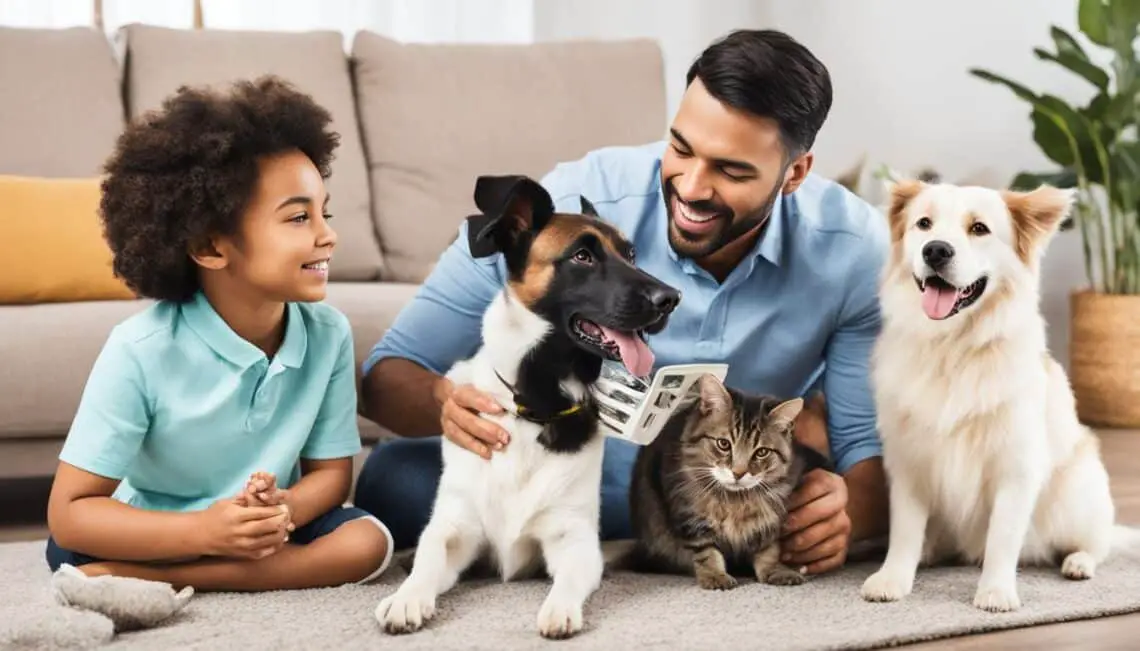
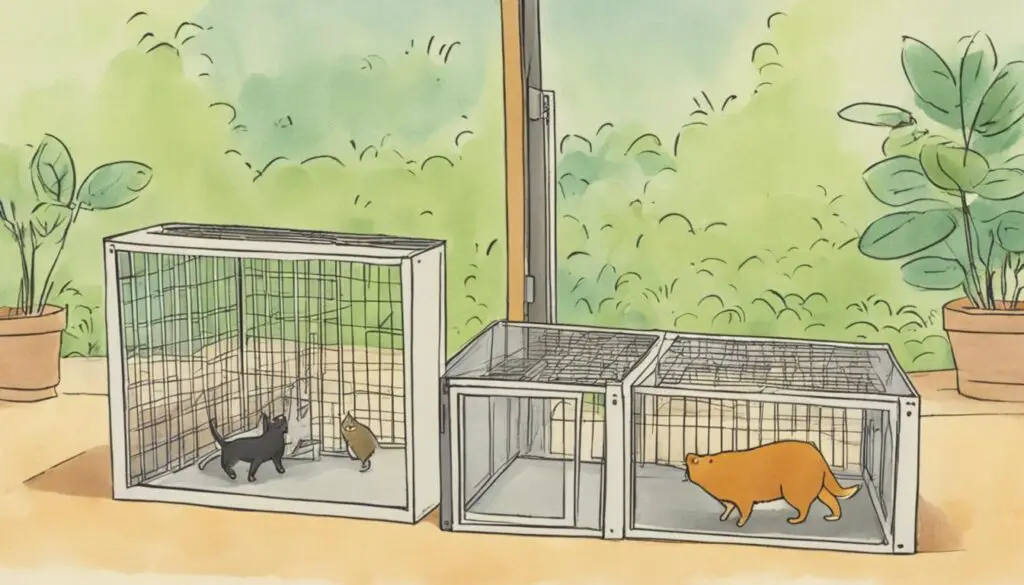
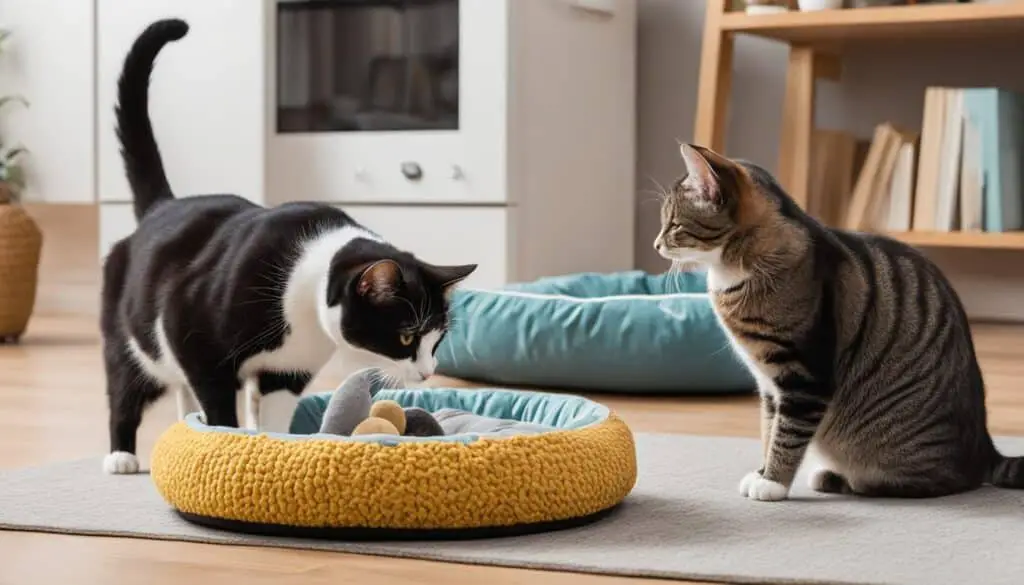
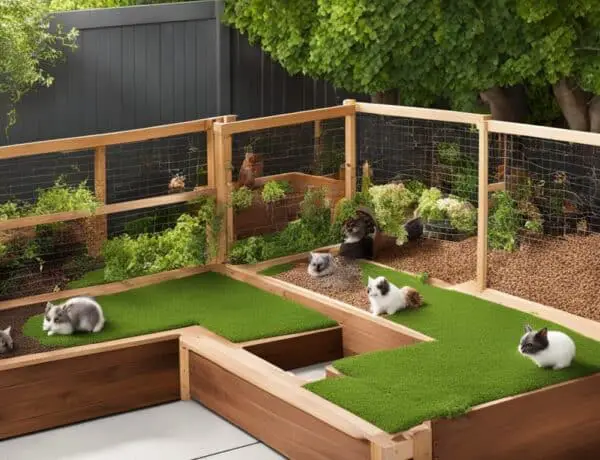
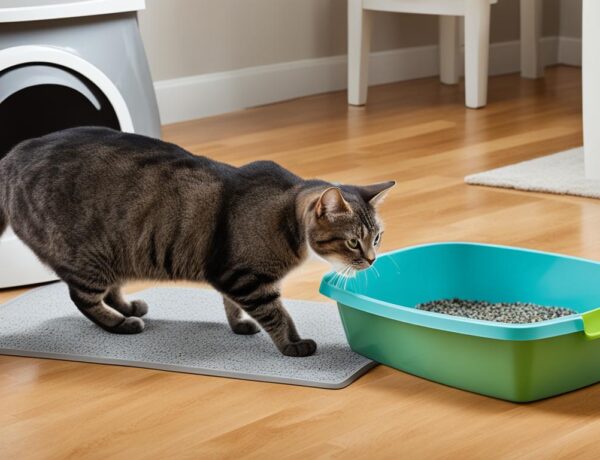
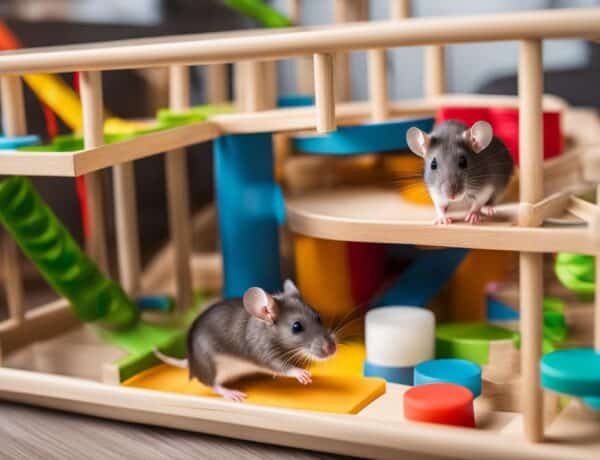
No Comments